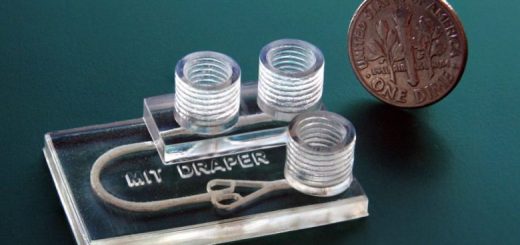RMIT, RUAG and IMCRC drive the innovation of 3D printed aircraft parts
Researchers are developing laser technology to manufacture and repair steel and titanium parts in what could be a game-changing application for industry.
A team of researchers from RMIT University in Melbourne, Australia, led by Professor Milan Brandt, are using laser metal deposition technology to build and repair defence aircraft parts in a two-year collaboration with RUAG Australia and the Innovative Manufacturing Cooperative Research Centre (IMCRC).
The technology feeds metal powder into a laser beam, which when scanned across a surface adds new material in a precise, web-like formation. The metallurgical bond created has mechanical properties similar, or in some cases superior, to those of the original material.

“It’s basically a very high tech welding process where we make or rebuild metal parts layer by layer,” explains Brandt, who says the concept is proven and prospects for its successful development are extremely positive.
Head of Research and Technology at RUAG Australia, Neil Matthews, says that by enabling onsite repair and production of parts, the technology could completely transform the concept of warehousing and transporting for defence and other industries. Currently, replacement parts typically need to be transported from local or overseas storage and suppliers.
“Instead of waiting for spare parts to arrive from a warehouse, an effective solution will now be on-site,” says Matthews. “For defence forces this means less downtime for repairs and a dramatic increase in the availability and readiness of aircraft.”
The technology will apply to existing legacy aircraft as well as the new F35 fleet. The technology is also being adopted in RUAG’s recently established robotic laser additive manufacturing cell.
A move to locally printed components could mean big savings on maintenance and spare part purchasing, scrap metal management, warehousing and shipping costs.
An independent review, commissioned by BAE Systems, estimated the cost of replacing damaged aircraft components to be in excess of $230 million a year for the Australian Air Force.
CEO and Managing Director of the IMCRC, David Chuter, believes application of this technology will be much broader than defence.
“The project’s benefits to Australian industry are significant. Although the current project focuses on military aircraft, it is potentially transferable to civil aircraft, marine, rail, mining, oil and gas industries,” says Chuter.
“In fact, this could potentially be applied in any industry where metal degradation or remanufacture of parts is an issue.”
The research project is the latest collaboration over the past decade between RUAG Australia and Brandt, who is Director of RMIT’s Centre for Additive Manufacturing and a leading expert in the field.
“As the leading Australian research organisation in this technology, we are confident of being able to deliver a cost-effective solution that fulfils a real need for defence and other industries,” says Brandt.
Sources: RMIT, IMCRC




Recent Comments